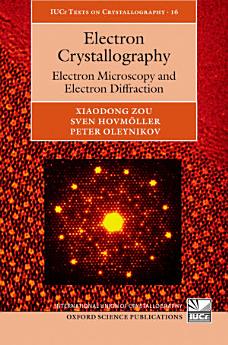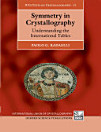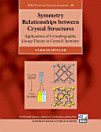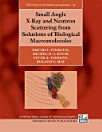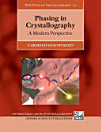Electron Crystallography: Electron Microscopy and Electron Diffraction
Xiaodong Zou · Sven Hovmöller · Peter Oleynikov
thg 8 2011 · International Union of Crystallography Texts on Crystallography Sách 16 · Oxford University Press
Sách điện tử
345
Trang
family_home
Đủ điều kiện
info
reportĐiểm xếp hạng và bài đánh giá chưa được xác minh Tìm hiểu thêm
Giới thiệu về sách điện tử này
In the modern world of ever smaller devices and nanotechnology, electron crystallography emerges as the most important method capable of determining the structure of minute objects down to the size of individual atoms. Crystals of only a few millionths of a millimetre are studied. This is the first textbook explaining how this is done. Great attention is given to symmetry in crystals and how it manifests itself in electron microscopy and electron diffraction, and how this symmetry can be determined and taken advantage of in achieving improved electron microscopy images and solving crystal structures from electron diffraction patterns. Theory and practice are combined; experimental images, diffraction patterns, formulae and numerical data are discussed in parallel, giving the reader a complete understanding of what goes on inside the "black boxes" of computer programs. This up-to-date textbook contains the newest techniques in electron crystallography, including detailed descriptions and explanations of the recent remarkable successes in determining the very complex structures of zeolites and intermetallics. The controversial issue of whether there is phase information present in electron micrsocopy images or not is also resolved once and for all. The extensive appendices include computer labs which have been used at various courses at Stockholm University and international schools in electron crystallography, with applications to the textbook. Students can download image processing programs and follow these lab instructions to get a hands-on experience of electron crystallography.
Giới thiệu tác giả
Xiaodong Zou is the chair of Inorganic and Structural Chemistry Unit, Department of Materials and Environmental Chemistry, and director of the Berzelii Centre EXSELENT on Porous Materials, Stockholm University. She is a member of the IUCr Commission on Electron Crystallography (2002-2011) and the Structure Commission of International Zeolite Association (2010-). She received several awards, including the K.H. Kuo Award for Distinguished Scientist (2010) and, Göran Gustafsson Prize in Chemistry (2008) and Tage Erlander Prize (2002), both given by the Royal Swedish Academy of Sciences. Her main research interests include method development for 3D structure determination of nano-sized materials by X-ray diffraction and electron crystallography, especially on zeolites and related porous materials and complex intermetallic compounds, and synthesis and applications of inorganic open-framework materials and metal-organic frameworks. Peter Oleynikov has been a researcher at Stockholm University since 2008. He writes programs for computer control of electron microscopes and for analysis of the diffraction data obtain, as well as programs simulating EM images and electron diffraction patterns. Sven Hovmöller was visiting scientist in Madrid and Nantes and was Secretary of the IUCr commission on Electron Crystallography 1999-2002. He introduced image processing of EM images by Fourier transform analysis from molecular biology into inorganic chemistry in 1984 and started, together with Xiaodong Zou, the series of annual International schools in Electron Crystallography, in 1994. Hovmöller develops new methods and computer programs for electron crystallography and is also interested in quasicrystals and their approximants and protein structure and its prediction.
Xếp hạng sách điện tử này
Cho chúng tôi biết suy nghĩ của bạn.
Đọc thông tin
Điện thoại thông minh và máy tính bảng
Cài đặt ứng dụng Google Play Sách cho Android và iPad/iPhone. Ứng dụng sẽ tự động đồng bộ hóa với tài khoản của bạn và cho phép bạn đọc trực tuyến hoặc ngoại tuyến dù cho bạn ở đâu.
Máy tính xách tay và máy tính
Bạn có thể nghe các sách nói đã mua trên Google Play thông qua trình duyệt web trên máy tính.
Thiết bị đọc sách điện tử và các thiết bị khác
Để đọc trên thiết bị e-ink như máy đọc sách điện tử Kobo, bạn sẽ cần tải tệp xuống và chuyển tệp đó sang thiết bị của mình. Hãy làm theo hướng dẫn chi tiết trong Trung tâm trợ giúp để chuyển tệp sang máy đọc sách điện tử được hỗ trợ.
